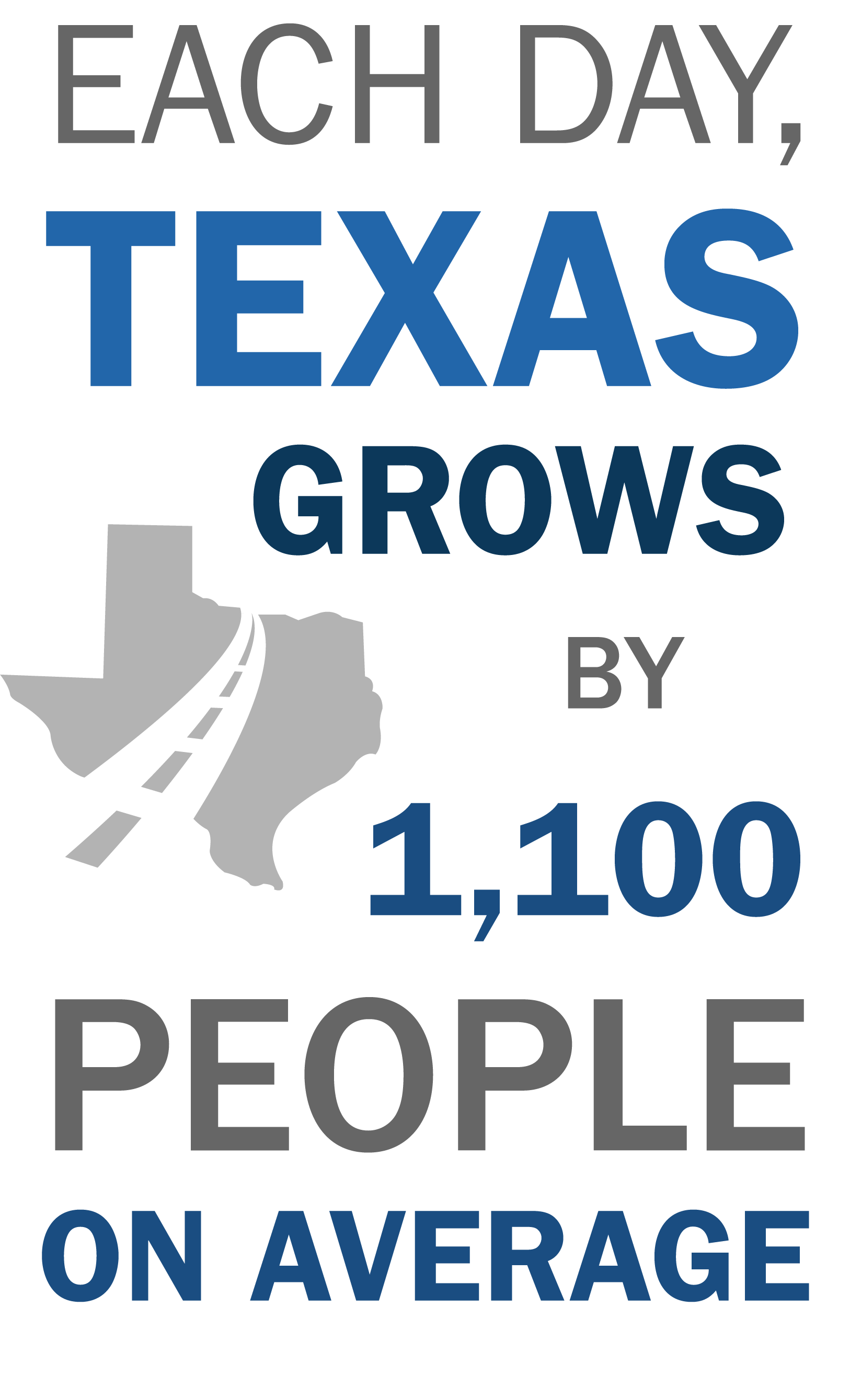Performance Dashboard

Goal: Optimize system performance
Outcomes:
- People and goods travel efficiently in Texas
- Texas is a hub for trade and economic development
- TxDOT partners to provide infrastructure that supports transportation options for moving people and goods
Congestion and reliability indices
This represents the average traffic congestion and travel time on Texas roadways. Transportation affects every aspect of our daily lives. The amount of time we spend in congestion is time spent away from family and friends. Tracking travel times across Texas helps identify priority areas for our projects aimed at reducing the amount of time spent in congestion and improving overall reliability.
The optimal value for all indices is 1.0, which means traffic is flowing at the posted speed limit. A score of 1.5 means 30 minutes should be planned for a 20-minute trip during free-flow travel (30 minutes divided by 20 minutes).
The Urban Congestion Index represents the total time that should be allowed to ensure on-time arrival for an average trip within urban areas (areas with a population greater than 50,000 people).
The Reliability Index is similar to the Congestion Index. The distinction is that it represents how much total time should be allowed to ensure (with 95 percent probability) an on-time arrival. The Reliability Index is related to three other performance measures:
The Urban Reliability Index is calculated in areas with a population greater than 50,000 people.
The Rural Reliability Index is calculated in areas with fewer than 50,000 people.
The Truck Reliability Index is calculated for urban and rural areas using only commercial trucks.
Note: The charts above model the adjusted series of the congestion and reliability indices, which are produced by the Texas Transportation Institute. All indices include interstate, freeway, arterial, and collector roads.
Vehicle miles traveled
This is the number of miles traveled by vehicles on Texas roadways. The total vehicle mileage on our highway system reflects population and economic growth, as well as driver behavior. It directly influences the congestion and reliability indices shown above.
Vehicle Miles Traveled is the total mileage traveled on Texas roadways in a year.
Annual delay per person
This reflects the number of hours of delay per driver per year on Texas roadways. The highway system in Texas serves the growing needs of the traveling public. Hours of delay on Texas roadways incurs time and cost for businesses and the general population. Tracking the delay helps identify areas of improvement for relieving bottlenecks and enhancing the efficiency of the transportation system.
This measure estimates the annual delay per person in the state. It is the ratio of the total annual hours of delay for all vehicles on Texas roadways to the estimated population of Texas, according to the Texas Demographic Center.
Note: The chart above models the adjusted series of annual delay per person, which is produced by the Texas Transportation Institute. This measure includes interstate, freeway, arterial, and collector roads.
Traveling across Texas?
Each day, Texas grows by 1,100 people on average. According to the Texas Demographic Center, our metro population is expected to double by 2050. This rapid population growth means more vehicles on Texas roads and increased congestion.
In response, the Transportation Commission introduced the Texas Clear Lanes initiative to help provide congestion relief. This effort targets the Austin, San Antonio, Houston, Dallas and Fort Worth areas, where 65 percent of the state’s population lives and 92 of Texas’ 100 most congested roads are located.
